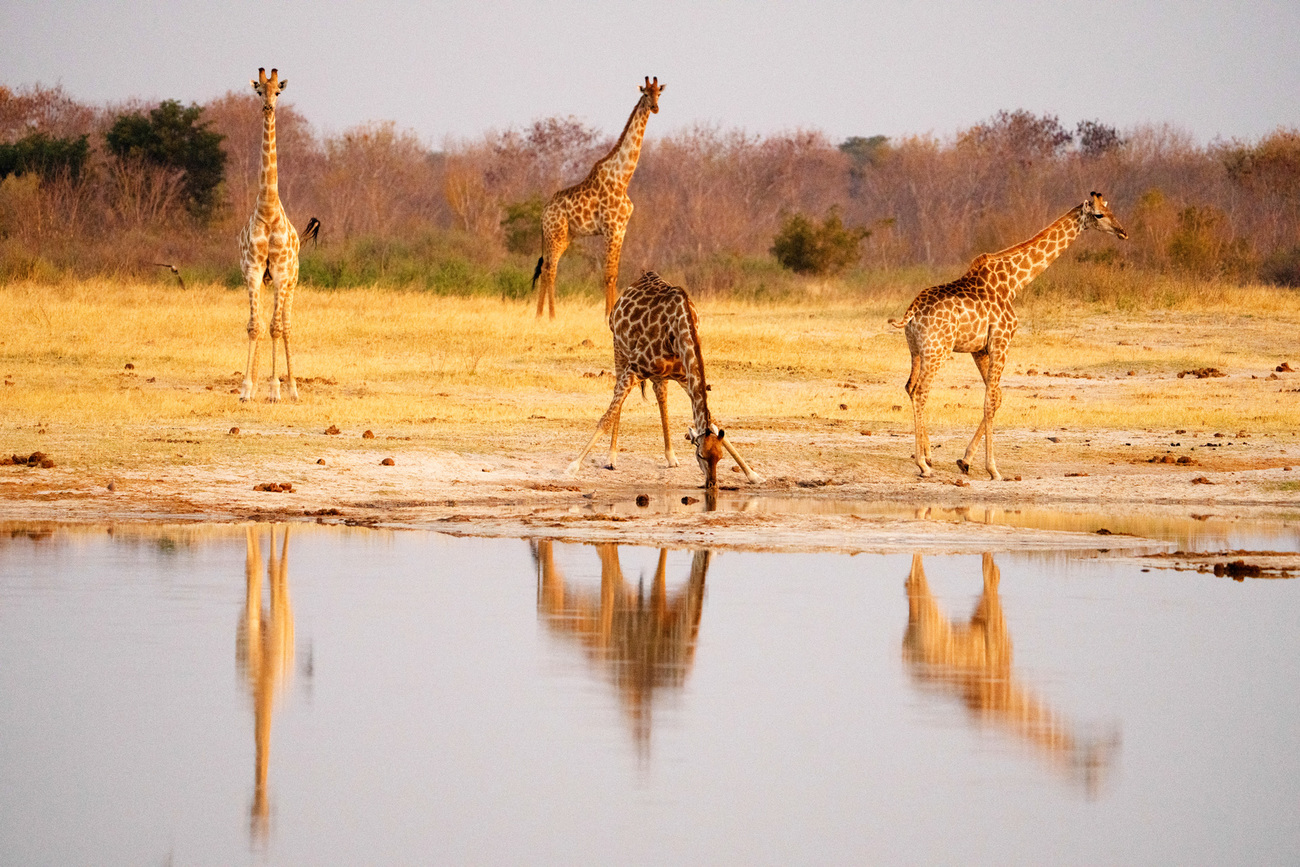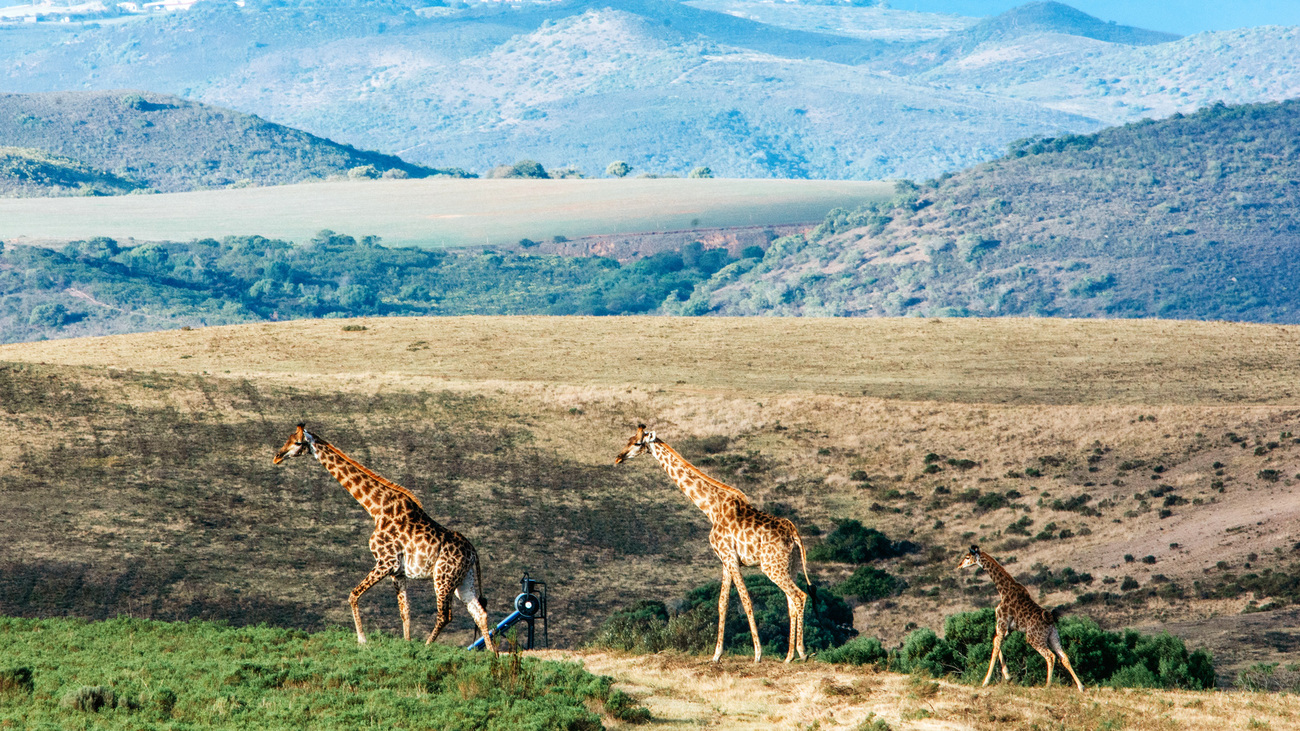drought and human-wildlife conflict threaten giraffes
drought and human-wildlife conflict threaten giraffes

Giraffes have been going extinct for years, but their plight has gone largely unnoticed.
Over the past three decades, giraffe populations have plummeted by up to 40%. This decline has been labelled as a “silent extinction” because it has happened slowly and flown under the radar.
One of the critical issues threatening giraffes today is the drought in the Horn of Africa region, particularly its severity in Kenya, which many giraffes call home. Between June and November 2022 at least 6,093 wild animals perished in Kenya—more wildlife casualties than any other drought on record in the country—including 93 endangered Maasai giraffe.
This ongoing drought—the worst the region has experienced in four decades—has not only perpetuated food and water scarcity for people and animals but has also fueled human-wildlife conflict.
human-wildlife conflict intensifies amid drought
As rivers and watering holes on which giraffes rely dry up, and many of their grazing areas become dusty plains, they are forced to roam into human settlements in search of water.
In these communities, where people rely on agriculture and livestock for their own livelihoods, these intruding giraffes may be perceived as competition for scarce water. They may also disrupt agriculture—for instance, giraffes have started eating certain farm produce, such as mangoes.
These factors can thrust people and giraffes into violent or deadly conflict. In particular, along the Kenya-Somali border, where there is a high concentration of the endangered reticulated giraffe, new farms along the Tana River have blocked giraffes’ access to water sources. When giraffes have attempted to reach the water, the farmers have used lethal methods, including snares, spears, and ditches, against them.
giraffe populations in decline
Even prior to the drought, giraffes were in trouble.
In addition to water scarcity and conflict with humans, giraffes face growing threats of habitat loss, civil unrest, illegal hunting, poaching, and unregulated international trade. The United States has a heavy hand in giraffe trade, with 39,516 specimens imported between 2006 and 2015, including dead and live animals and parts. Belgium, France, Germany, Greece, Italy, Spain, and the United Kingdom also import giraffes and their parts.
Another reason giraffes are struggling to recover is their low reproductive output—they have a 15-month gestation period and only birth one calf at a time (only 5 or 6 total during a lifetime).
Since 2016, the IUCN has listed giraffes as vulnerable. Out of the eight recognized giraffe subspecies, the IUCN classifies one, the Angolan giraffe, as least concern, and one as near threatened, Rothschild’s giraffe. Two subspecies are classified as vulnerable, the West African giraffe and Thornicroft’s giraffe. The reticulated giraffe and the Maasai giraffe are classified as endangered, and the Kordofan giraffe and Nubian giraffe are critically endangered. The Angolan giraffe, found in southwest Africa, and the Maasai giraffe, found in Kenya and Tanzania, together make up close to half of the total giraffe population.
Giraffes historically occupied much of the semi-arid savannah and savannah woodlands in Africa, but only roam south of the Sahara today. There are an estimated 68,000 giraffes left in the wild.

what are we doing to help giraffes?
There is hope for giraffes. In 2019, at CITES CoP18, six African countries, Kenya included, proposed that giraffes should be listed for protection from trade, and governments voted in their favor.
IFAW is working to protect giraffes both at a policy level and on the ground. In 2022, after being petitioned by IFAW and other wildlife conservation groups to list the giraffe as Endangered on the US Endangered Species Act, which would end the import of giraffe products, the US Fish and Wildlife Service agreed to finalize a decision by November 2024. In 2021, IFAW rescued a giraffe from a poacher’s spear. In May 2023, IFAW’s Olgulului Community Wildlife Rangers reunited an abandoned week-old giraffe with its mother.
Because protecting wildlife and managing their habitats are some of the best ways to mitigate climate change—which is how droughts like this one can become less frequent and more predictable—IFAW is working to increase the connectivity of habitats as part of our Room to Roam initiative. This will allow wildlife to more easily access food and water, even during droughts and dry seasons, which will in turn reduce human-wildlife conflict.
Related content
Our work can’t get done without you. Please give what you can to help animals thrive.